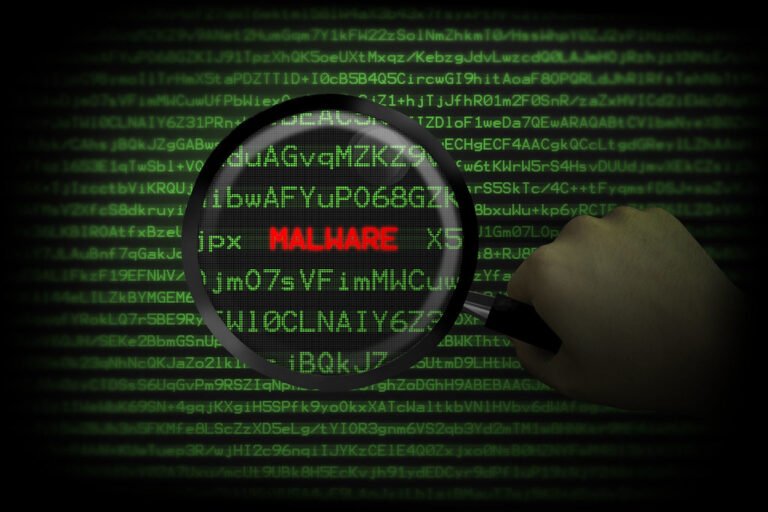
Malware or malicious software brings significant threats to both individuals and organisations. It is important to understand why malware is critical for software developers and security professionals, as it helps to protect systems, safeguard sensitive information, and maintain effective operations.
In this blog, we will provide detailed insights into malware, its impacts and other prevention strategies. Stay with us till the end.
What is Malware?
Malware refers to software designed intentionally to cause damage to the computer, server, computer network or client. The term includes a range of harmful software types including worms, viruses, Trojan horses, spyware, ransomware, and adware.

Common Types of Malware
Malware comes in different types and has the following unique features and characteristics:
- Viruses: A code that attaches itself for cleaning files and infects them, thus spreading to other files and systems.
- Worms: Malware that replicates and spreads to another computer system, and affects network vulnerabilities.
- Trojan Horses: Malicious and dangerous code disguised as legal software, often tricking users to install it.
- Ransomware: These programs encrypt the user’s files and demand payment to unlock them.
- Spyware: Software that monitors and gathers user information secretly.
- Adware or Scareware: A software serving unwanted ads on the user’s computer, mostly as pop-ups and banners. Scareware can be defined as an aggressive & deceptive adware version, “informing” users of upcoming cyber threats to “mitigate” for a fee.
How Does Malware Spread?
Malware will spread through different methods that includes:
- Phishing emails
- Infected hardware devices
- Malicious downloads
- Exploiting software vulnerabilities
How Malware Attacks Software Development?
Malware will attack software development in many ways including:
- Supply Chain Attacks: The supply chain targets third-party vendors and attacks the software that will be later used for attaching their customers.
- Software Vulnerabilities: Malware will exploit known and unknown weaknesses in software code to get unauthorized access and execute malicious code.
- Social Engineering Attacks: These attacks trick developers into installing malware and revealing sensitive information.
- Phishing Attacks: Phishing attacks engage in sending fraudulent messages or emails and trick developers into clicking on malicious links and downloading attachments.
Practices to Prevent Malware Attacks
Given are some of the best practices that will help to prevent malware attacks:
- Use Antimalware Software: Installing the antimalware application is important when protecting network devices and computers from malware infections.
- Use Email with Caution: Malware can be prevented by implementing safe behaviour on computers and other personal devices. Some steps include not accessing email attachments from any strange addresses that may have malware disguised as legitimate attachments.
- Network Firewalls – Firewalls on the router setups and connected to open Internet, enable data in and out in some circumstances. It keeps malicious traffic away from the network.
- System Update– Malware takes advantage of system vulnerabilities patched with time as discovered. “Zero-day” exploits take benefit of the unknown vulnerabilities, hence updating and patching any known vulnerabilities can make the system secure. It includes computers, mobile devices, and routers.
How to Know You Have Malware?
There are different signs your system will be infected by the malware:
- Changes to your search engine or homepage: Malware will change your homepage and search engine without your permission.
- Unusual pop-up windows: Malware will display annoying pop-up windows and alerts on your system.
- Strange programs and icons on the desktop.
- Sluggish computer performance.
- Trouble in shutting down and starting up the computer.
- Frequent and unexpected system crashes.
If you find these issues present on your devices, they may be infected with malicious malware.
How To Respond to Malware Attacks?
The most effective security practice mainly uses the combination of the right technology and expertise to detect and respond to malware. Given below are some tried and proven methods:
- Security Monitoring: Certain tools are used to monitor network traffic and system activity for signs of malware.
- Intrusion Detection System or IDS: Detecting any suspicious activity and showing alerts.
- Antivirus Software: Protecting against any known malware threats.
- Incident Response Plan: Having a proper plan to respond to malware attacks efficiently.
- Regular Backups: Regular updates of significant data to reduce the impact of attacks.
Conclusion
The malware threat is evolving constantly, and software developers and security experts need to stay well-informed and take proactive measures.
By checking out different kinds of malware, the way they attack software development, and best practices for prevention and detection, you will be able to help protect your data and system from attack and harm.
FAQs
Virus is one kind of malware and malware mainly refers to almost all code classes used to hard and disrupt your computing systems.
There are a lot of malware attack vectors: installing infected programs, clicking infected links, opening malicious email attachments, and using corrupted output devices like a virus-infected USB.
Consider using an authentic malware removal tool for scanning your device, look for malware, and clean the infection. Restart your system and scan again to ensure the infection is removed completely.